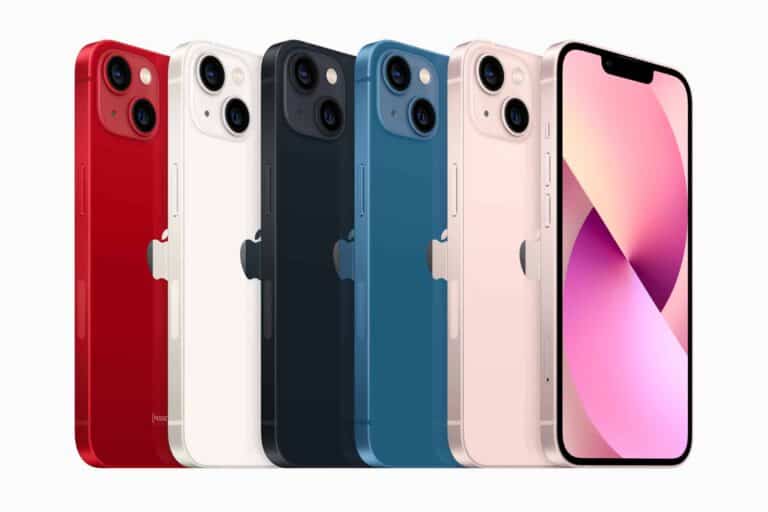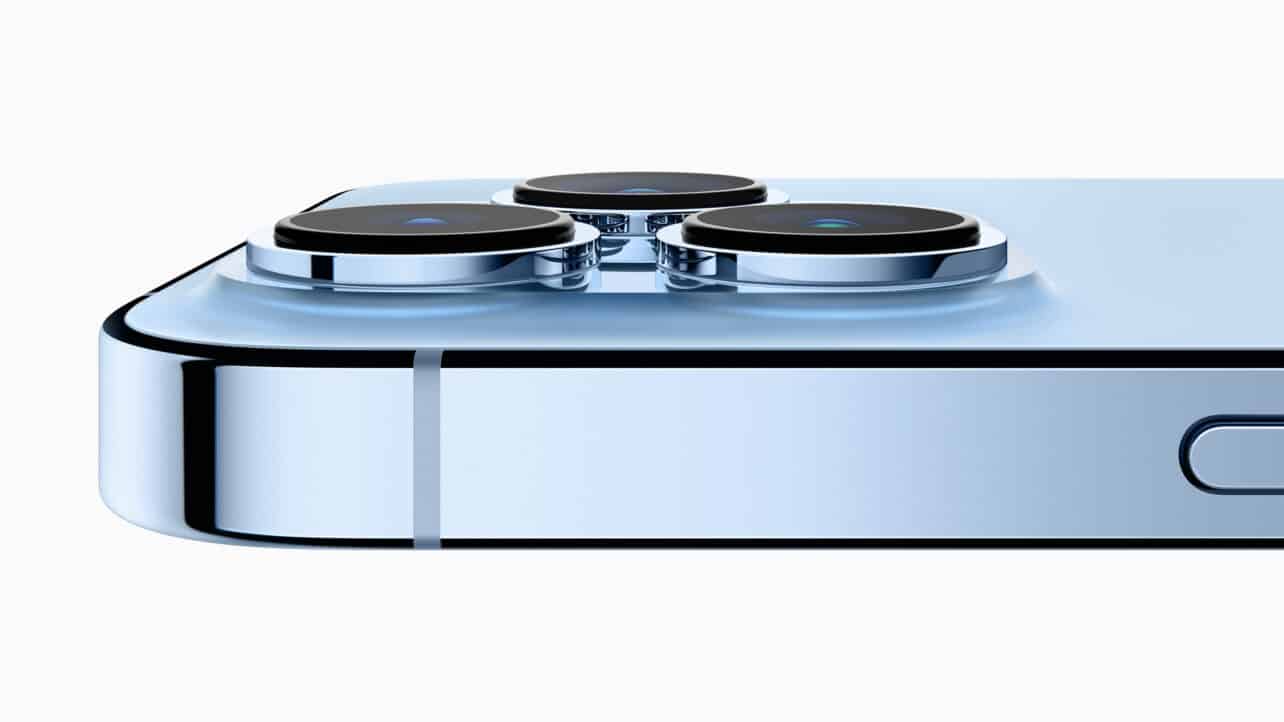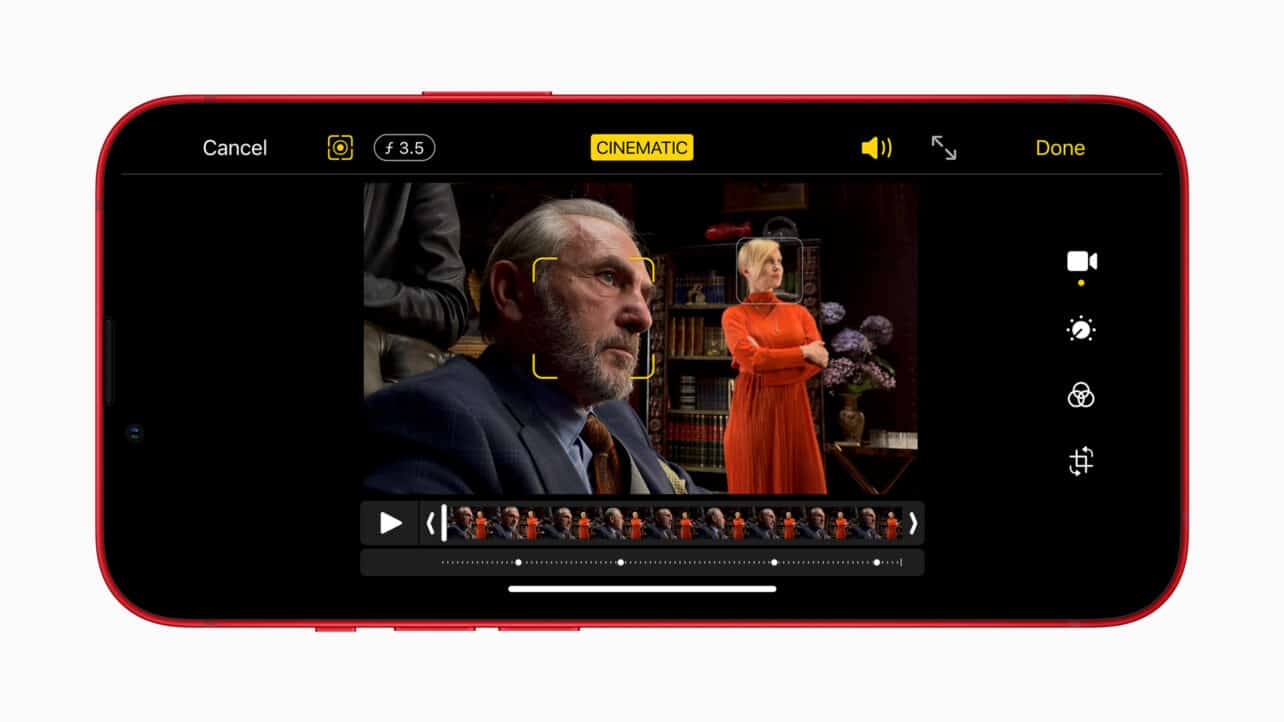Like clockwork, Apple introduces a new iPhone in October. In 2021, we arrived at number 13. After using the iPhone 13 and iPhone 13 Pro Max for the past few months, we’re asking ourselves whether it might be worthwhile to skip this generation.
The iPhone 13 lineup consists of four new models: the iPhone 13 mini, iPhone 13, iPhone 13 Pro and iPhone 13 Pro Max. In the table below, you can review the detailed differences between the pair. Roughly speaking, the iPhone 13 is the mainstream model and the iPhone 13 mini is its smaller version. The iPhone 13 Pro is the high-end model and the iPhone 13 Pro Max is its larger version.
If you’re looking for a handheld smartphone, you might as well stop reading at this point. The iPhone 13 mini is simply the best handheld smartphone on the market, featuring a 5.4-inch display and a significantly better camera and battery life than its predecessor. You won’t find any alternative that offers this level of functionality and performance, even in the bulging offering of Android phones. Its target audience is somewhat limited, but for anyone seeking a handheld, the iPhone 13 mini is a no-brainer.
However, most consumers will hover between the iPhone 13, iPhone 13 Pro and iPhone 13 Pro Max. The Pro Max’ most prominent selling point is its 6.7-inch screen, which offers significantly more screen area than the other two versions (6.1-inch). For many people, the Pro Max is a size too big. Yours truly certainly agrees. Be that as it may, the question remains: how do you decide which model suits you best, and is an actually useful upgrade for this year?
| iPhone 13 mini | iPhone 13 | iPhone 13 Pro | iPhone 13 Pro Max | |
| Price | € 809 | € 909 | € 1.159 | € 1.259 |
| Screen size | 5.4 inch | 6.1 inch | 6.1 inch | 6.7 inch |
| Screen resolution | 2340×1080, 476ppi | 2532×1170, 460ppi | 2532×1170, 460ppi | 2778×1284, 458ppi |
| Screen type | Super Retina XDR OLED | Super Retina XDR OLED | Super Retina XDR OLED | Super Retina XDR OLED |
| ProMotion | no (60Hz) | no (60Hz) | yes (10-120Hz) | ja (10-120Hz) |
| Processor | A15 Bionic | A15 Bionic | A15 Bionic | A15 Bionic |
| Storage | 128GB, 256GB, 512GB | 128GB, 256GB, 512GB | 128GB, 256GB, 512GB, 1TB | 128GB, 256GB, 512GB, 1TB |
| Back camera | 12MP (wide), 12MP (ultawide) | 12MP (wide), 12MP (ultawide) | 12MP (tele), 12MP (wide), 12MP (ultrawide) | 12MP (tele), 12MP (wide), 12MP (ultrawide) |
| Zoom (optical/digital) | yes / 5x | yes / 5x | 3x / 15x | 3x / 15x |
| Front camera | 12MP | 12MP | 12MP | 12MP |
| Connectivity | 802.11ax, Bluetooth 5.0 | 802.11ax, Bluetooth 5.0 | 802.11ax, Bluetooth 5.0 | 802.11ax, Bluetooth 5.0 |
| 5G support | yes | yes | yes | yes |
| Wireless charging | yes (15W) | yes (15W) | yes (15W) | yes (15W) |
| Dimensions | 132 x 64 x 7,7 mm | 147 x 72 x 7,7 mm | 147 x 72 x 7,7 mm | 161 x 78 x 7,7 mm |
| Weight | 141 grams | 174 grams | 204 grams | 240 grams |
Minimal improvements
In this review, we won’t go into detail about the design and basic capabilities of the iPhone. In fact, since the introduction of the iPhone X in 2017, little has changed in terms of appearance. The most significant improvements took place under the hood. We will primarily be reviewing improvements over the iPhone 12, the previous generation.
In the following table, we’ve contrasted the iPhone 12 and 12 Pro with the iPhone 13 and 13 Pro. With the exception of the iPhone 13 Pro’s new processor, triple optical zoom and maximum storage of 1 terabyte, there are very few changes this year. Not much to be excited about. Only when diving into the details do we start to see some interesting differences. For example, although the iPhone 12 and 13 use the same screen panel, brightness has been increased by 28 percent for the new generation. Among other things, this makes for better screen readability in sunlight.
| iPhone 12 | iPhone 13 | iPhone 13 Pro | iPhone 12 Pro | |
| Screen size | 6.1 inch | 6.1 inch | 6.1 inch | 6.1 inch |
| Screen resolution | 2532×1170, 460ppi | 2532×1170, 460ppi | 2532×1170, 460ppi | 2532×1170, 460ppi |
| Screen type | Super Retina XDR OLED | Super Retina XDR OLED | Super Retina XDR OLED | Super Retina XDR OLED |
| ProMotion | no (60Hz) | no (60Hz) | yes (10-120Hz) | no (60Hz) |
| Processor | A14 Bionic | A15 Bionic | A15 Bionic | A14 Bionic |
| Storage | 64GB, 128GB, 256GB | 128GB, 256GB, 512GB | 128GB, 256GB, 512GB, 1TB | 128GB, 256GB, 512GB |
| Back camera | 12MP (wide), 12MP (ultrawide) | 12MP (wide), 12MP (ultawide) | 12MP (tele), 12MP (wide), 12MP (ultrawide) | 12MP (tele), 12MP (wide), 12MP (ultrawide) |
| Zoom (optical/digital) | no / 5x | no / 5x | 3x / 15x | 2x / 10x |
| Front camera | 12MP | 12MP | 12MP | 12MP |
| Dimensions | 147 x 72 x 7,4 mm | 147 x 72 x 7,7 mm | 147 x 72 x 7,7 mm | 147 x 72 x 7,4 mm |
| Weight | 164 grams | 174 grams | 204 grams | 189 grams |
Another thing not apparent at first glance is that the iPhone 13’s cameras are significantly better than those of the iPhone 12. The 12-megapixel sensor is larger, allowing the iPhone 13 to capture 47 percent more light. Also, optical image stabilization is now supported. That means better and sharper photos, especially in difficult lighting conditions. In our real-world tests, we noticed little difference between iPhone 12 and iPhone 13 pictures taken during the day. However, as soon as it starts to get dark, the new iPhone 13 sensor truly flexes its muscles.

The differences between the iPhone 13 Pro (or Pro Max) and its predecessors are even greater. In addition to improved screen brightness, Apple opted for ProMotion, a technology that removes the 60 Hz-lock on a screen’s refresh rate and adjusts it according to applications and circumstances. ProMotion dynamically adjusts the refresh rate between 10 and 120 Hz. This provides many advantages, especially in gaming and video editing, but is already noticeable when performing basic tasks such as scrolling through web pages. On the other hand, developers are required to update their apps to support ProMotion, which can be disadvantageous. Furthermore, those who get used to ProMotion won’t like switching to a device that doesn’t support it; scrolling suddenly feels unnatural and jerky.
The biggest improvement of the iPhone 13 Pro (Max) is its camera. In addition to the improvements mentioned above, the ultra-wide-angle sensor captures 92 percent more light, and has therefore become suitable for Night Mode. The camera section does protrude considerably more than before. This makes the model quite ‘top-heavy’, which is something we’re not entirely happy about. However, if you’re an avid filmmaker, the return is worth it.
Tip: Samsung unveils new Galaxy S22, alternative for iPhone 13
ProRes & Film Mode
The iPhone 13 series uses the A15 Bionic, a new processor. In short, the upgrade offers higher clock speeds and significantly more cache, which can lead to substantial performance gains (20 percent on average in Geekbench). In addition, power consumption is often lower than the A14. Furthermore, the ‘Neural Engine’ has been sped up significantly. This part of the processor handles all ‘machine learning’ tasks, such as Siri commands and calculations for photography and video.
What makes the iPhone 13 Pro (Max) so interesting is the combination of camera improvements and the A15 Bionic. Anyone who has ever photographed with a recent iPhone can tell you that the camera automatically recognizes the face of the main subject. The iPhone 13 Pro’s cameras and A15 allow multiple faces, pets and objects to be recognized. Movie Mode even allows you to manually or automatically shift the focus from one subject to another (focus pull). Afterwards, the focus and degree of bokeh can be adjusted in iMovie or Final Cut Pro. Also, the A15 Bionic processor supports photography and video in Dolby Vision HDR.
For those wanting to film up close, there’s a macro mode that’s automatically selected when the main subject gets close to the camera lens. The focusing distance was reduced to 2 centimetres for the iPhone 13 Pro, which is quite impressive. Manual switching between normal and macro mode was made possible in iOS 15.2.
Lastly, the iPhone 13 Pro supports ProRes, which leaves no doubt about the fact that the iPhone 13 Pro explicitly targets photo and video professionals. ProRes is an advanced video codec predominantly used in the film industry. ProRes offers higher colour fidelity and lower compression than traditional codecs, similar to the RAW format in photography. However, considering the huge file sizes you have to deal with, ProRes is complete overkill for average users.
Conclusion
With all that said, we loop back to the beginning of this review. Is the iPhone 13 series a mandatory purchase? No. Not unless you’re looking for a small device, because in that case, we can fully recommend the iPhone 13 mini. For those currently walking around with an iPhone 11 or 12, there are no convincing reasons to upgrade to the iPhone 13. The most prominent improvement is in the camera, but that’s something you’ll only notice when shooting lots of footage in ambient light. Additionally, it’s unfortunate that the iPhone 13 lacks ProMotion (dynamic refresh rate), which we hope to see integrated in all models from the iPhone 14 onwards.
For the iPhone 13 Pro and iPhone 13 Pro Max, it’s basically the same story — especially considering their hefty price tags. ProMotion is great, but that’s not why you buy a new device. Again, the biggest improvements are in the cameras, but unless you (semi-)professionally photograph or film, we see no point in upgrading if your current phone still suffices.
We hope that Apple will engineer a few convincing arguments in the iPhone 14 lineup, such as the removal of notches or the return of Touch ID (in the side button or under the screen). Until then, we would hold off on an upgrade.



